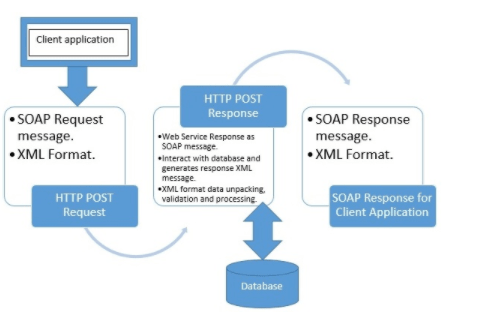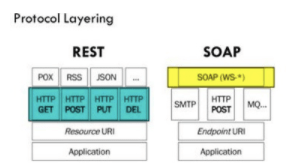A web service is offered by one device to another and dictates how they communicate online. For businesses looking to invest in web service testing, this article defines the importance of web service testing, its main components, and the differences between other types of testing.
What Is Web Service Testing?
Web services allow different types of applications to share information, data, and communication among themselves. A web service is a unit of managed code that can be activated through HTTP requests. Once it’s exposed, other applications can use its functionality and experience.
The purpose of web services testing is to check the reliability, functionality, security, and performance.
To ensure your business’s web-based applications fit the right criteria, companies should invest in web services testing as part of their overall security strategy.
This article will cover the benefits of web service testing, its main features, and the difference between it and another testing style.
Why Is Web Service Testing Important?
Web-based applications need to be developed at a rapid pace to compete with market need. In this modern age of technology, there are many ready-made features available that can plug into various applications to provide different services.
Web services allow businesses and providers to do these kinds of implementations while maintaining web presence management.
For example, if your web-based app wants to include location data, your development team wouldn’t need to go and build this functionality from scratch. These services can be used from other providers that have already established the processing.
Web service testing is critical to prevent any security issues, promote seamless connection, and prepare system for adaptability and scale.
An efficient web service testing process includes generating code for the web service, defining test inputs, verification, and other processes that detect errors within a system.
There are several open-source tools that automate the web service testing process for larger organizations.
Businesses looking to scale their processes within a web-based application must understand web service testing and how it impacts the overall web development workflow.
Components of Web Service Testing
- SOAP
- REST
Web service testing can be implemented in various ways including:
SOAP
SOAP (Simple Object Access Protocol) is a standard process defined for receiving and sending web service requests and responses.

SOAP uses XML to send and receive the request, meaning that the data is platform-independent. The messages are exchanged between the provider app and receiving app within the SOAP envelopes.
Compared to other protocols of web service testing, SOAP has a more rigid set of messaging patterns.
REST
Unlike SOAP, REST (Representational State Transfer architecture) is a more flexible processing protocol.
REST was designed to work with media components, files, or objects based on specific hardware devices.
It generally runs over HTTP, emphasizing the interactions between clients and services.

Unlike SOAP, it uses HTTP built-in headers to carry meta information and only supports data exchanges outside of XML-based languages.
This system is also usually preferred for mobile and web applications because of how fast, dynamic, and smooth it makes the user experience for website sections.
Companies need to consider which component would work best for their processes in the long term.
Differences Between API & Web Service Testing
Web service testing assesses the functionality of an application, while an API (application programming interface) is a subset of a web service.
An API includes procedures and functions that enable an app to request and send information. Their flexibility within a system allows them to receive any type of communication.
QA for both processes is important – so it is key for companies to nail down the differences between web service testing and API testing.
- All web services are APIs, but not all APIs are web services.
- APIs have a light architecture while web service testing requires a specific protocol.
- The flexibility of APIs allows any communication style to be read during testing, whereas web services are more limited.
- A disadvantage of using an API is that it is time-consuming, whereas web service testing offers faster communication within and across organizations.
Businesses need to consider the benefits and drawbacks of each type of testing process before finalizing their development plans and website strategy for web-based applications.
Use Web Service Testing for Your Web-Based Platforms
Web services enable two or more devices or applications to communicate and exchange information or data. As your business and its web-based products scale, it is key to integrate a testing system like web service testing within your internal structure.
Web service testing differs from other testing processes, uses various protocols, and reduces errors within a system.
To test functionality, usability, and performance, investing in web service testing is an effective way to bring the best application to market for users and add another layer of security for your business.